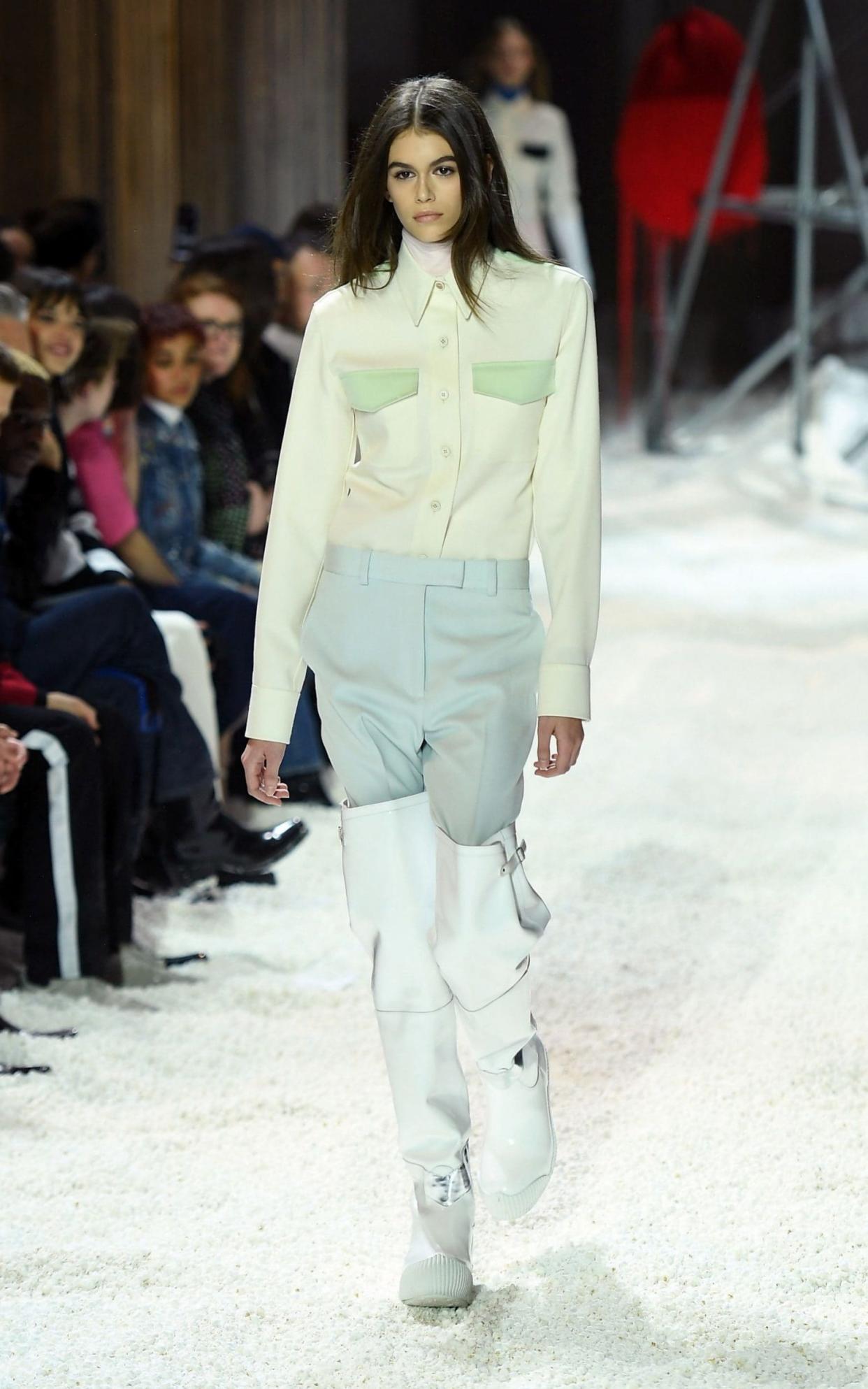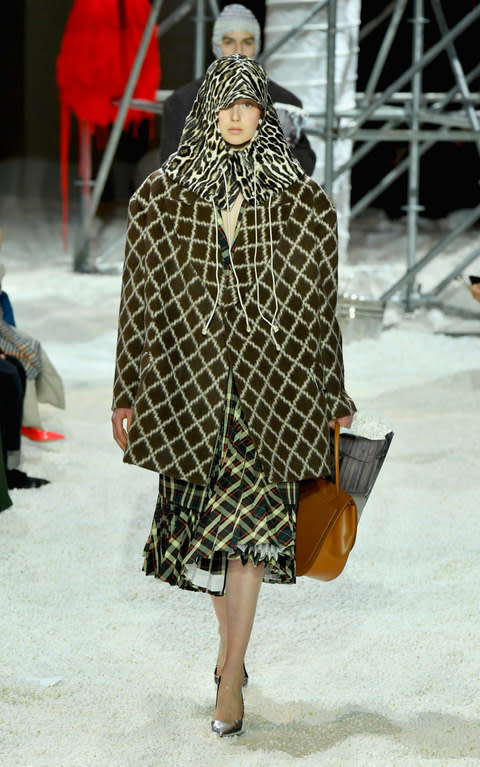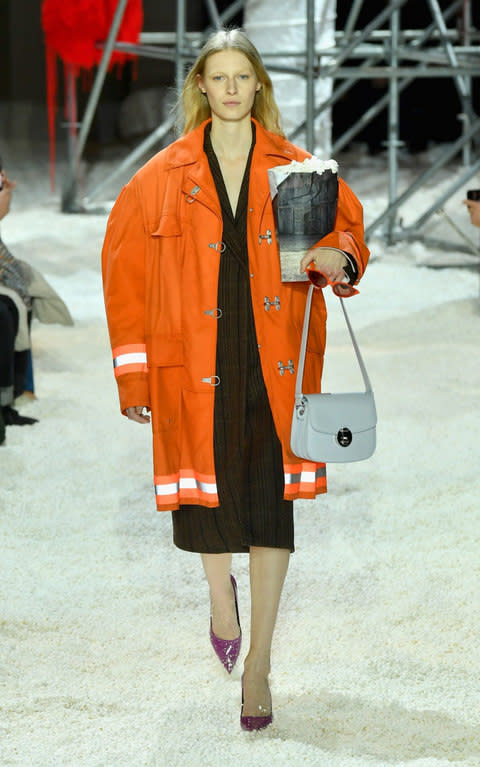Balaclavas and boiler suits: Raf Simons' latest collection for Calvin Klein addresses unnerving future possibilities

Before setting out for Calvin Klein’s show on Tuesday evening, I was noodling around on Instagram and clicked into a jolly live video in which 13 year-old Stranger Things star Millie Bobby Brown was interviewing the ultimate American good girl supermodel, Karlie Kloss. It was all sweet and lovely talk about how much they admired each other. ‘See you at the show!’ they signed off.
The show, it turned out, comprised a set of dilapidated barns and bulbous factory tubing with a floor ankle-deep in popcorn (the fashion set will be brushing the crumbs off their shoes for days).
Raf Simons, now a year on from his first show as chief creative officer at Calvin Klein, has been one of the very few major designers to grapple on such a monumental, emotional scale with social and political commentary. So the juxtaposition of young celebrity and an impending sense of doom did actually make sense, sort of.

“It was about heroes…. Like firefighters,” was Simons' pared-back explanation for a collection which addressed unnerving future possibilities and nostalgia for past triumphs and failures, from the Civil War to the moon landing. With the hand-knitted balaclava as its hero accessory (only a few models, including Kaia Gerber- obviously- were seen without theirs) and a faded hazmat-esque boiler suit as the first look, the show could have been an elaborate vision for the costume design on series two of The Handmaid’s Tale.

After Michelle Obama’s official First Lady portrait was unveiled this week, Simons’ patchwork preoccupation, which began in that first collection, gained a renewed cultural currency. Although she wasn’t wearing Calvin, the dress Obama chose for the commission featured a patchwork-print skirt which designer Michelle Smith said had been particularly inspired by the quilts created by the African-American community of Gee’s Bend in Alabama. If that is the ‘now’ status of patchwork, then Simons’ concept for the future was to back it with foil so it that it looked half polite and domesticated, half emergency rescue survival gear.

Elsewhere in the collection the practical, dystopian dream wardrobe of survivalists conflated with romance and nostalgia. Swooshing tiered cotton skirts were worn with extra-large tweed coats and elbow length silver gloves of the kind a firefighter might pull on. A silver foil pinafore came with a pretty doily-ish trim and a supple brown leather coat was layered over a trench with fluro orange stripes and worn with a leopard-print hood.
There were undoubtedly plenty of pieces which, out of context, will be beautiful in their own right; the voile prairie dresses, tailored tweeds and novelty knitwear. But there was also something disconcerting about evoking desire via looks which communicated pessimism and suffering. Simons’ genius is that he is able to conjure that reality check at all.


